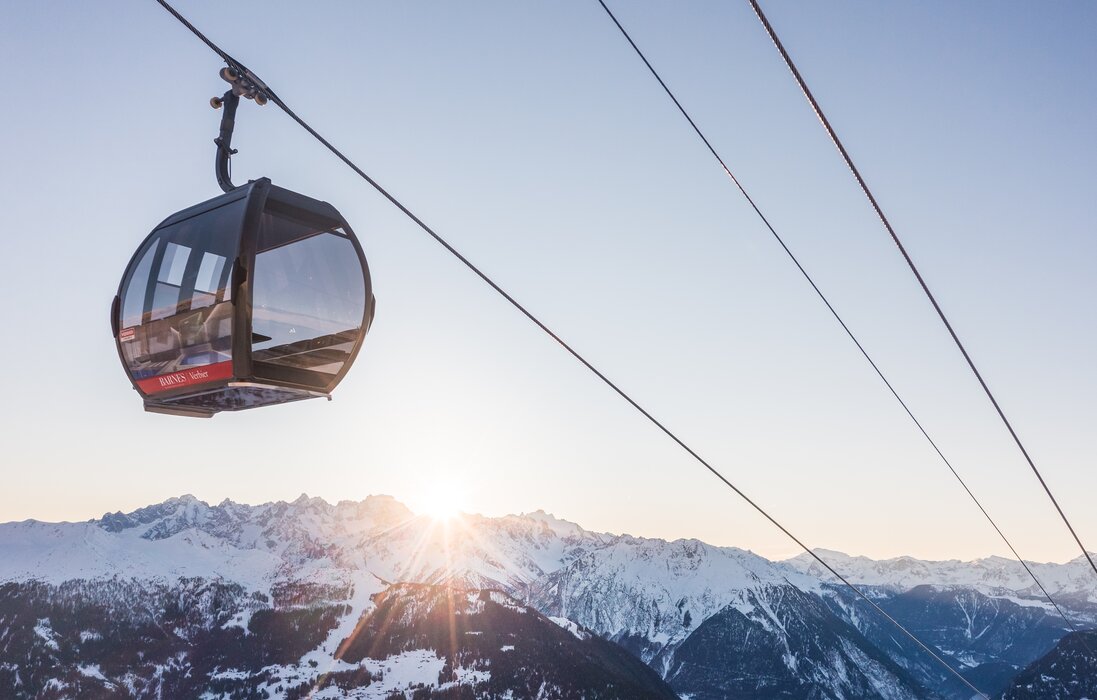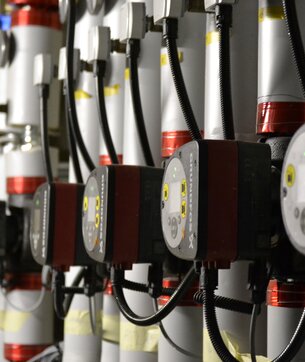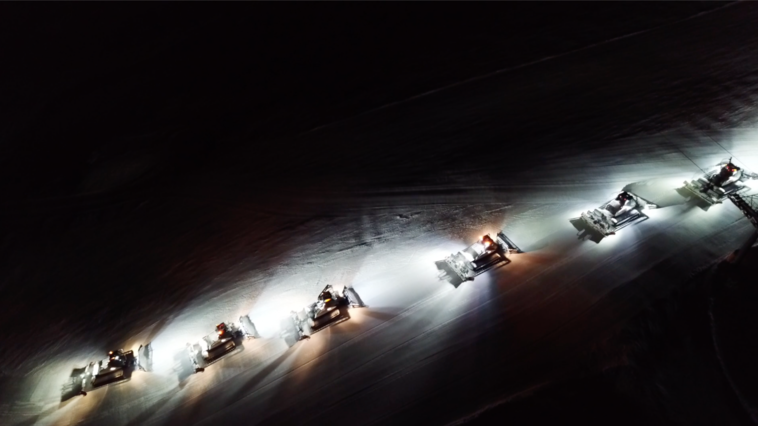As you can imagine, the smooth running of a ski area like Verbier 4Vallées requires staff trained in a wide range of different professions. There are those who work outdoors, such as snow groomers, slope patrollers or electricians, those who are based indoors, such as human resources, IT and marketing specialists, and those who are in direct contact with the public. The list is endless!
Let us tell you about some of the less visible aspects of our work.
In Switzerland, ski resorts are very important for tourism, and therefore for the economy. They allow both locals and tourists to enjoy winter sports and make the best of the mountains whatever the season.
To remain competitive and attractive, ski lift companies like ours have invested in facilities such as lifts, snowmaking equipment and buildings. All of these consume a lot of energy and can have a negative impact on the environment, already affected by global warming.
So, when running a ski area such as Verbier 4Vallées, one of the major goals which we must constantly strive for is reducing CO2 emissions and energy consumption, as well as developing sources of renewable energy.
Smart Altitude
In order to help ski resort operators limit their impact on the environment, the Interreg Alpine Space Smart Altitude has developed a European project, a decision-making toolkit, to help facilitate the implementation of new policies and measures aimed at reducing energy consumption and greenhouse gas emissions.
On the Swiss side, this project was co-financed within the framework of the NPR (SECO) through the Regional Development Fund, as well as by the Canton of Valais, the Commune of Bagnes and Téléverbier SA. To do this, the Crem Research Center supported the various partners in the development of methodologies and the creation of results, with the support of the Federal Office for Spatial Development (ARE).
Toolkit
This toolkit is based on a 6-step plan:
- Audit current energy consumption
- Set priorities (define key measures for developing low-carbon projects)
- Plan and optimise the selected measures
- Implement the pre-defined measures
- Monitor and evaluate the effect and impact of the measures
- Communicate the results
With this toolkit, strategies can be defined to help anticipate climate change and reduce the impact which ski resorts have on the environment.
As an important national resort, Verbier was given the opportunity to participate in the development of this project as one of the four living labs involved (each in a different country).
Environmental commitments
We have been working for years at reducing our impact on the environment. While we may not be perfect, we have implemented a number of measures, which you can take a look at here.
We use 17.8 GWh of energy per year, just over a third of which is accounted for by the ski lifts, 37% by the grooming equipment and 21% by the buildings.
To reach the goals we have set, we have developed Energy Performance Indicators (EnPI - Indices de performance énergétique, IPE). These allow us to compare the actual results with the objectives, to eliminate the effects of external factors such as weather variations, to be made aware of any major changes in energy consumption so that we can act quickly, and to compare the results with those of previous years and the average values of each sector.
Take a look at the most interesting indicators below.
Ski lift efficiency
This indicator highlights the correlation between yearly energy consumption and the total number of passengers per year. It is calculated as follows:
EnPI efficiency of the lifts = yearly electricity consumption of the lifts (kWh/year) / number of passengers per year.
We are delighted to note that there is a definite reduction for this indicator. This is due to the replacement of older engines with more efficient ones and the regulation of the speed of the lifts depending on the number of people using them. By 2035, we hope to reduce energy consumption by a further 15%.
Buildings
Don’t forget that there’s more to a ski resort than just lifts! There are many buildings as well, such as restaurants, offices, storage areas, etc. These were closely scrutinised in the Smart Altitude project.
Unfortunately, given the energy consumption (kWh) in relation to the surface area (m2), our buildings are not heated very efficiently. Dating from the 70s, these large buildings need to be renovated in order to improve the thermal insulation. Needless to say, this is part of our investment plan.
However, there are other very encouraging results. By switching to a district heating network and replacing the old oil-fired boilers with wood pellet burners, we have greatly reduced our buildings’ greenhouse gas emissions.
We have made a lot of progress in the last few years. Our aim is for our buildings to be using 100% renewable energy by 2035 (55% in 2018-2019).
Other measures
A big part of our energy consumption is due to the lifts and buildings, but there are other areas too, which we haven’t overlooked.
Take the grooming machines, for example. They use a lot of diesel, but we have taken steps to reduce this:
- Work is carried out on the slopes in the summer, with the aim of reducing land movement as much as possible and thereby limiting snow waste.
- Snow grooming machines are equipped with devices which measure the depth of the snow, making the machines more efficient.
- We use a program which enables us to visualise and optimise slope grooming.
- We train drivers in eco-driving and raise their awareness of its importance.
In addition to this, we are hoping that by 2035, we can replace at least some of the grooming machines with hybrid, electric, or even hydrogen-fuelled models, if these have been developed.
Conclusion
Managing a ski resort is very complex, especially one the size of Verbier 4Vallées. Just like many other leisure facilities, lifts have an impact on the environment.
However, Téléverbier is a pioneer when it comes to limiting its environmental impact. We have been working relentlessly, for over ten years already, towards improving our energy performance and use of renewable energy in order to reduce waste and energy consumption.
It’s an ongoing and stimulating challenge, and we are lucky to have programs that help us make decisions and finance certain projects.








